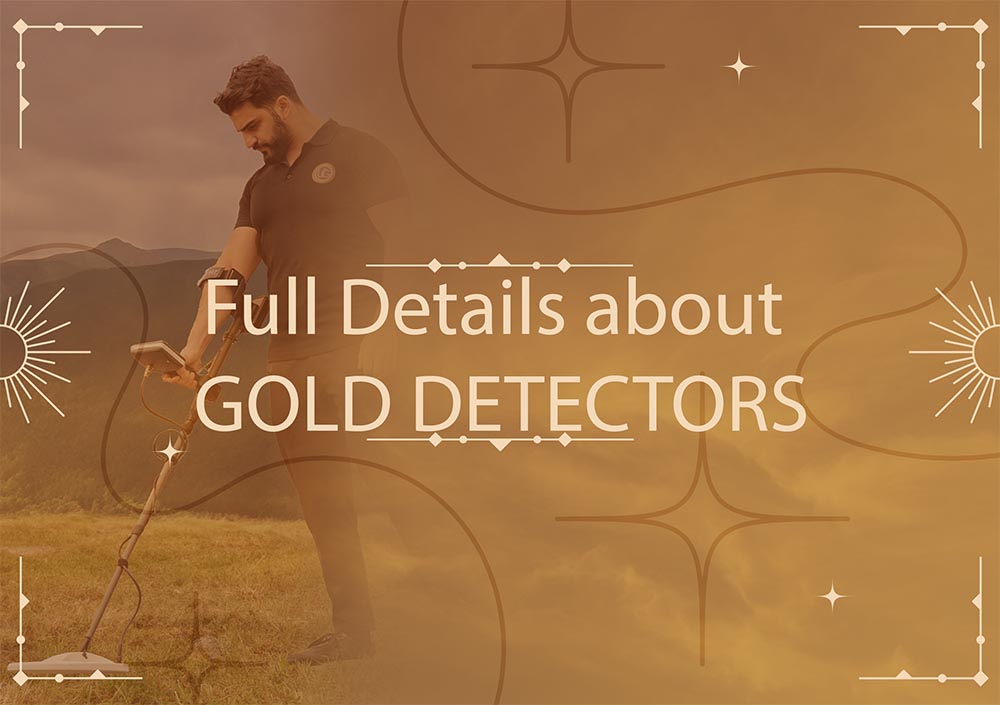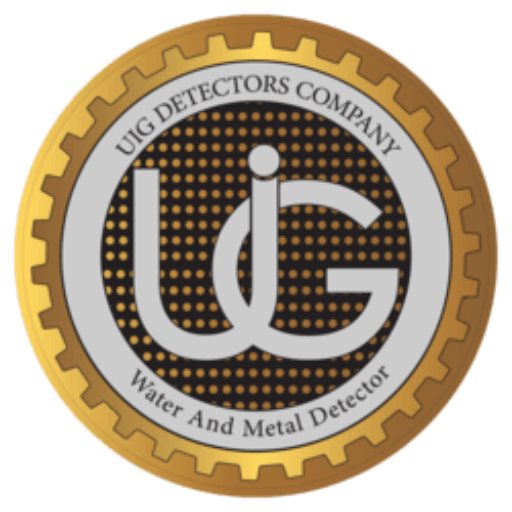Informations détaillées sur les détecteurs d’or 2024

Full details about Gold detectors 2024
Table of Contents
What is a Gold detector?
A gold detector is a tool for detecting metals, with the capability to search for various types of gold (raw, buried, archaeological, gold veins) along with other valuable metals. Some regular metal detectors can be misled by signals from certain metals, mistaking them as gold signals. However, specialized gold detectors can be finely tuned to focus specifically on the type of signal produced by gold. This way, you are less likely to waste time on valueless items, increasing your chances of discovering hidden treasures!
Here’s a concise summary about gold detectors and their applications:
1- Finding Natural Raw Gold: The UIG GOLD DIGGER device is distinguished by its ability to detect gold, identifying even the smallest hidden gold pieces across various soil types and terrains.
2- Detecting Gold Veins: The UIG GOLD DIGGER allows prospectors to locate hidden gold veins within rocky terrains in the desert.
3- Discovering Ancient Coins: Gold detectors help in finding minted gold coins from historical civilizations such as the Persians, Romans, Pharaohs, and Ottomans.
4- Detecting Royal Artifacts and Ornaments: These devices enable the discovery of ancient gold crowns, bracelets, and rings used for adornment.
5- Archaeological Excavation: Gold detectors assist in discovering gold-made artifacts, such as swords and other metal tools.
How a gold detector work?
A gold detector operates based on various physical technologies that rely on the interaction of metals with magnetic or electrical fields. The most common technologies used in gold detectors include:1. Electromagnetic Frequencies (VLF - Very Low Frequency):
- This system sends low-frequency electromagnetic waves into the ground. When these waves hit a metallic object like gold, the frequency changes, and the device analyzes this shift to locate the metal. This type is usually used for detecting small gold pieces at shallow depths. The UIG GOLD DIGGER gold detector operates with VLF technology, the most common and precise for detecting small gold and metals. These devices have two coils: -
Transmitter Coil: Sends electromagnetic waves into the ground.
Receiver Coil: Captures signals produced by any metal in the soil. 2. Pulse Induction Technology (PI):
- This technology relies on sending powerful pulse waves (pulse induction) into the ground. When a metal object is present, the device analyzes the pulse response time to determine the type of metal—whether valuable or non-valuable—and its depth. The TITAN GER 1000 uses this latest effective technology to detect gold and other valuable metals at significant depths. It is mainly used for gold exploration in areas with high mineral soil content and can ignore many unwanted metal signals.
3. Ionic or Magnetic Field Technology:- These devices send radar waves into the ground, detecting wave reflections when they collide with various objects, including gold. They capture the ionic or magnetic fields around metals or treasures that have been underground for years, making it possible to reduce lengthy and random searching.
4. Soil Balancing Technology:
- Many gold detectors feature soil balancing, which helps the device ignore non-precious metals and elements in the soil, such as iron or mineral salts, that might impact performance. This feature is especially useful in environments with a high mineral content.
5. Adaptability to Terrain and Depth:- The deeper the target, the harder it is to find gold. Advanced devices from UIG Detectors come with additional features like frequency adjustment based on terrain type, improving detection accuracy in rugged or desert environments.
Types of Gold Detectors
Finding gold isn't just a matter of luck! There are various types of gold detectors, each most effective under certain conditions. Here’s a guide to help you choose the right device for your treasure hunt:
- Devices for detecting buried gold underground
- Devices for detecting raw gold and gold veins underground
- Devices for detecting buried archaeological treasures underground
- Devices for detecting buried precious metals underground
- Devices for detecting ancient relics and graves underground
- Devices for detecting diamonds and gemstones underground
Detection systems include:
- Long Range Locator System
- Pulse Induction System
- Ionic Fields Detection Search System
- Electromagnetic VLF System
- 3D Imaging Detection Search System
- Magnetometer Detection Search System
For Beginners: Raw Gold Detectors
Some metal detectors are designed specifically for gold hunting! These devices are the most popular for gold detection, making them ideal for beginners and hobbyist prospectors. They are affordable and easy to use. How They Work: - The coil or plate sends an electromagnetic field into the ground. - When the field hits gold, it reflects a signal.
- The detector analyzes the signal and displays the type of metal (hopefully, gold!) on the screen.
For Serious Prospectors: Pictorial Gold Detectors
These powerful machines are designed to awaken the adventurer within each of us! Professional prospectors use them to reach astonishing depths, capable of detecting buried treasures up to 20-25 meters underground.
Remember!
Imaging gold detectors are more complex and require practice to master. They work using magnetic sensors that send signals deep into the ground, creating a detailed 3D image that indicates what is buried.
Best places to find gold
Rivers and Streams (Placer Gold): Gold nuggets carried by flowing water can settle in rivers and streams. This is a classic spot for beginners, but it requires research to find areas with historical gold deposits
Beaches: Similar to rivers, gold can accumulate along shorelines. Black sand beaches might be especially promising due to the concentration of heavy minerals.
Desert Areas: Gold veins can sometimes be exposed in dry, rocky areas. These can be great targets for detectorists, but require knowledge of local geology.
Old Mining Sites: Areas with a history of gold mining are prime targets. Even if the main deposits are depleted, prospectors might find overlooked nuggets or flakes.
Parks and Historical Sites: People have been losing things for centuries! Parks and areas with a long history might hold hidden gold jewelry or coins.
Watch the following video about gold detectors it will help you understand the topic more
Test gold you found at home
Congratulations you found your first gold treasure, now how to make sure it’s REAL !!!!
Do the following at home
Try the float test (sinks = good), magnet test (attracts = fake, but not always!), or scratch test (gold streak = good, black mark = bad). For definitive results, visit a jeweler.
UIG detectors is here to assist you finding your next Gold treasure and choosing the fit gold detector for you.
Register today to receive a free consultation, and our specialist will help you find your next gold detector.

Can Metal detector detect gold?
Yes, metal detectors can detect gold, but with some conditions:
- Type of detector: Some detectors are better suited for gold prospecting than others. Pulse Induction (PI) detectors are popular for gold due to their depth penetration.
- Size and concentration: Small, scattered gold pieces might be missed. Larger nuggets or concentrated gold are easier to pick up.
- Ground conditions: Mineralization in the ground can interfere with the signal.
Can you find coins with a metal detector?
Yes, metal detectors are a great tool for finding coins!
How to find gold on a beach?
∙ Low tide exposes fresh sand – prime hunting ground for treasures.
∙ Search near busy areas: lifeguard stands, concessions, past the high tide line.
∙ Metal detectors are the best to help you find hidden metallic treasures in this link you will find
How deep can a metal detector find gold?
Top-tier gold detectors can sniff out gold up to 60 meters underground! While most detectors reach 25-30 meters, advanced technology in gold detectors helps them pierce deeper. Pre-programmed settings and specialized coils give them the edge in the gold hunt.
How can you tell if gold is real at home?
At-home gold tests offer clues, not guarantees. Try the float test (sinks = good), magnet test (attracts = fake, but not always!), or scratch test (gold streak = good, black mark = bad). For definitive results, visit a jeweler.
Rate Our Article



